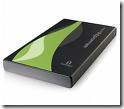
Data Storage: Flash Memory Devices
- Kingston Technology
Making SIMM, DIMM and Flash memory for computers, digital cameras, PDAs, and other multimedia devices.
www.kingston.com - SanDisk
Supplier of flash data storage products in consumer, OEM, and industrial markets.
www.sandisk.com - Maxtop Technology
Manufactures metal, plastic, rubber, customized, novelty, and promotional USB flash drives.
www.chinausbflashdrives.com - Transcend Information, Inc
Manufactures memory upgrade products for PC, notebooks, printers, and servers.
www.transcendusa.com - SimpleTech, Inc.
Manufacturer of computer memory upgrades, flash cards, flash drives, external drives, NAS, and other storage products.
www.simpletech.com - Pretec Electronics Corp.
Designs, manufactures, and markets a complete line of PCMCIA cards, compact modem for handheld PDAs, and digital cameras.
www.pretec.com - Spansion LLC
Manufacturer of flash memory technology and NOR flash products, including MirrorBit, Floating Gate, and Multi Chip products.
www.spansion.com - CompactFlash Association
www.compactflash.org - Silicon Storage Technology
Designs, manufactures, and markets single power supply, small erase-block flash memory components for the computer, communications, and consumer markets.
www.sst.com - Delkin Devices
Featuring eFilm digital memory cards, readers and adapters for digital cameras, PDAs, and more.
www.delkin.com - Viking Components
Offering memory for desktops, laptops, printers, enterprise systems, and a line of flash memory.
www.vikingcomponents.com - mimoco
Creators of designer toy flash memory drives.
www.mimoco.com - Lexar Media
Develops digital media and accessory products for the digital photography, consumer electronics, industrial, and communications markets.
www.lexarmedia.com - ATP Electronics
ISO 9001 manufacturer of MMC, RSMMC, SD, and MiniSD flash memory cards, as well as DDR333/400/II DRAM modules.
www.atpinc.com - MultiMediaCard Association (MMCA)
Founded in 1998 to promote the adoption of the MultiMediaCard as the global, open standard for removable, solid-state memory.
www.mmca.org - easyreplication
Provides CD, DVD, and CD audio replication, duplication, and manufacturing. Also offers CD and DVD business cards, custom shaped CD and DVD cards, and printed and duplicated compact flash cards, SD cards, mini-SD cards, and USB memory sticks.
www.easyreplication.co.uk - Adtron Corporation
Manufacturer of data storage solutions including solid state flash disks, in-chassis storage blades, and removable media drives for the defense, aerospace, automation, telecommunications, and transportation industries.
www.adtron.com - My Digital Discount
Offers compact flash cards, memory readers, and MP3 players.
www.mydigitaldiscount.com - Carry Computer
Specializes in USB2.0 flash memory card readers, SD, MMC, CF, MS, SM card adapters, media player, and storage devices.
www.carry.com.tw - Centennial Technologies
Provides custom and industry standard PC cards and memory modules.
www.cent-tech.com - d-store
Offering digital photography solutions including storage media, card readers, digital cameras, software, and more.
www.d-store.com - Migo
USB flash storage device with synchronization and data management software that displays the user’s Outlook email, bookmarks, and other files wherever they go. By Forward Solutions, Inc.
www.4migo.com - CFGear.com
Offering flash and USB drives, portable flash MP3 players, and custom logo USB flash drives for business promotion.
www.cfgear.com - Digi4me.com
Distributor of smartmedia, compactflash, multimedia, and secure digital flash memory cards. Rambus rdram and ddr sdram are also available.
www.digi4me.com - K&C Technologies
Offers the Universal Smart Drive flash memory drives in several capacities with features that include password protection and file encryption.
www.universalsmartdrive.net - Solid State Floppy Disk Card (SSFDC) Forum
Voluntary organization intended to promote SmartMedia, a small removable NAND flash memory card, as a de facto standard in the industry.
www.ssfdc.or.jp/english - ZxPro
Offers a range of brand name flash memory cards and peripherals including CompactFlash, SmartMedia, MMC, and Memory Stick.
www.zxpro.com - BlockMaster
Offers SafeStick USB flash drive that features mandatory password protection and always-on hardware encryption of all stored data.
www.blockmastersecurity.com - Platinum USB Pen Drive
The bottom half of the Executive Pen Drive from Platinum is a high quality ink pen or laser pointer, while the top half contains a USB memory stick.
www.platinumpen.com/pendrive.html - FlashWholesaler.com
Seller of custom logo imprinted flash memory jump drives. Order a corporate branded usb flash drive to market your company better.
www.flashwholesaler.com - FlashFX
From Datalight, a resident flash disk and flash media manager for NOR and NAND flash.
www.flashfx.com - Flashcardz.com
Offers discounted flash cards, USB drives, secure digital cards, hard drives.
www.flashcardz.com - Azzurri Direct
Provides USB Flash drives, Flash memory cards, Flash memory card readers, and other devices online.
www.azzurri-direct.com - JMTekStore.com USB Flash Drives
Direct sales for the USBDrive line of portable storage products. Store, transfer, and carry your data securely with JMKTek’s USB flash drives.
www.jmtekstore.com/shop/portablestorage.asp - Princeton Disc Customized Flash Drive
Offers promotional custom USB flash drive duplication, custom executive USB pen drives, mini USB drive, flash cards with imprinted logo, and data preloading.
www.customized-flash-drive.com - Lexar USB Flash Drives
Lexar offers the JumpDrive line of portable storage devices. Pocket-sized and lightweight USB flash drives for storing or transferring music, images, or computer files.
www.lexar.com/jumpdrive - Amazon.com: USB Flash Drives
Choose from a wide selection of USB flash drives at Amazon.com. Includes storage devices from Kingston, PNY, SanDisk, Lexar, and others.
www.amazon.com/USB-Flash-Drives-Storage-Add-Ons/b/002-5064880-7985668?ie=UT… - Kodak Flash Memory Cards
Information on memory for digital cameras including CompactFlash, multimedia cards, and SD cards in sizes up to 256MB. Also offers readers and writers.
www.kodak.com/eknec/PageQuerier.jhtml?pq-path=230&pq-locale=en_US - Flash Dealer
Offers industry information on customized promotional USB flash drives to help promote your company’s business services.
www.customflashdriveblog.com - Feiya
Designing memory controllers and their applications.
www.feiya.com.tw - FlashDealer.com
Offers custom flash drives in a variety of colors and materials (including wood, leather, and metal). Build a customized flash drive and market your company better.
www.customflashdriveutility.com - Kuang Chien Industry Co., Ltd.
Professional manufacturer and exporter specializing in various kinds of custom USB flash memory drives, such as wooden drives, pen drives, and more.
www.kci-tech.com
To add your Flash Memory Devices Link here, please feel free to contact us!


